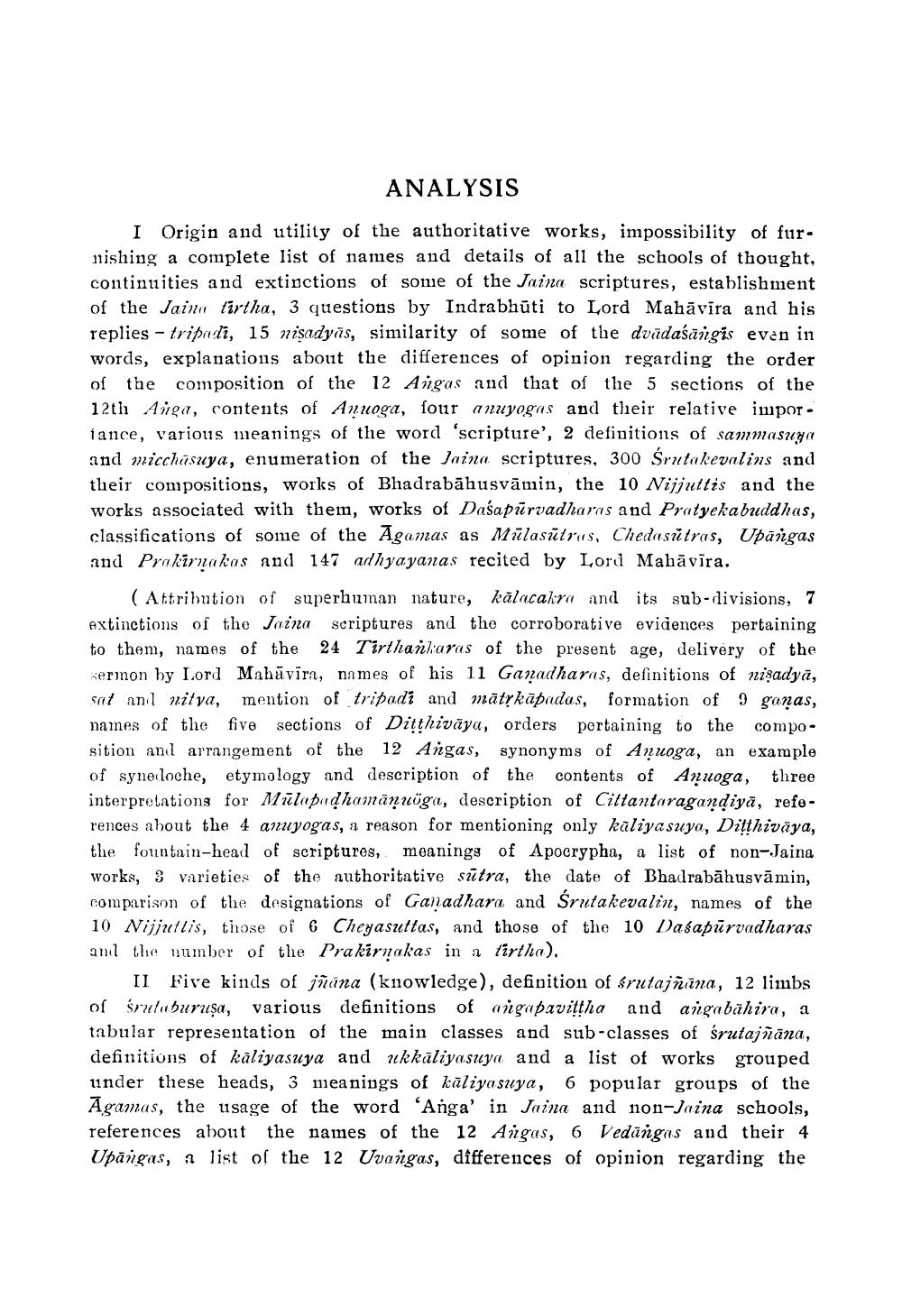Book Title: Canonical Literature Of Jainas Author(s): H R Kapadia Publisher: Hindi Granth Karyalay View full book textPage 6
________________ ANALYSIS I Origin and utility of the authoritative works, impossibility of furnishing a complete list of names and details of all the schools of thought, continuities and extinctions of some of the Jaina scriptures, establishment of the Jain tirtha, 3 questions by Indrabhūti to Lord Mahāvīra and his replies - tripadi, 15 nisadyas, similarity of some of the dvādaśārgis even in words, explanations about the differences of opinion regarding the order of the composition of the 12 Angas and that of the 5 sections of the 12th Anga, contents of Anuoga, four anuyogas and their relative importance, various meanings of the word 'scripture', 2 definitions of sammasuya and micchusuya, enumeration of the Jaina scriptures, 300 Srutakevalins and their compositions, works of Bhadrabāhusvāmin, the 10 Nijjuttis and the works associated with them, works of Daśapūrvadharas and Pratyekabuddhas, classifications of some of the Agamas as Mülasūtrus, Chedasútras, Upāngas and Prakirnakas and 147 adhyayanas recited by Lord Mahāvīra. ( Attribution of superhuman nature, kālacakra and its sub-divisions, 7 extinctions of the Jaina scriptures and the corroborative evidences pertaining to them, names of the 24 Tirthankaras of the present age, delivery of the sermon by Lord Mahāvīra, names of his 11 Ganadharas, definitions of nişadyā, sat anl nitya, mention of tripadi and mātrkāpadas, formation of 9 ganas, names of the five sections of Ditthivāya, orders pertaining to the composition and arrangement of the 12 Angas, synonyms of Aņuoga, an example of synecloche, etymology and description of the contents of Aruoga, three interpretations for Mülapadhamāņuöga, description of Cittantaragandiyā, reforences about the 4 anuyogas, a reason for mentioning only kaliyasuya, Ditthivāya, the fountain-head of scriptures, meanings of Apocrypha, a list of non-Jaina works, 3 varieties of the authoritative sutra, the date of Bhadrabāhusvāmin, comparison of the designations of Ganadhara and Srutakevalin, names of the 10 Nijjuflis, those of 6 Cheyasuttas, and those of the 10 Dasapūrvadharas and the number of the Prakirnakas in a tirtha). II Five kinds of jñüna (knowledge), definition of śrutajñāna, 12 limbs of śrulu buruşa, various definitions of argapavittha and angabāhira, a tabular representation of the main classes and sub-classes of śrutajñāna, definitions of kaliyasuya and ukkāliyasuya and a list of works grouped under these heads, 3 meanings of kāliyasuya, 6 popular groups of the Agamas, the usage of the word 'Anga' in Jaina and non-Jaina schools, references about the names of the 12 Angas, 6 Vedāngas and their 4 Upāngas, a list of the 12 Uvangas, differences of opinion regarding thePage Navigation
1 ... 4 5 6 7 8 9 10 11 12 13 14 15 16 17 18 19 20 21 22 23 24 25 26 27 28 29 30 31 32 33 34 35 36 37 38 39 40 41 42 43 44 45 46 47 48 49 50 51 52 53 54 55 56 57 58 59 60 61 62 ... 286
